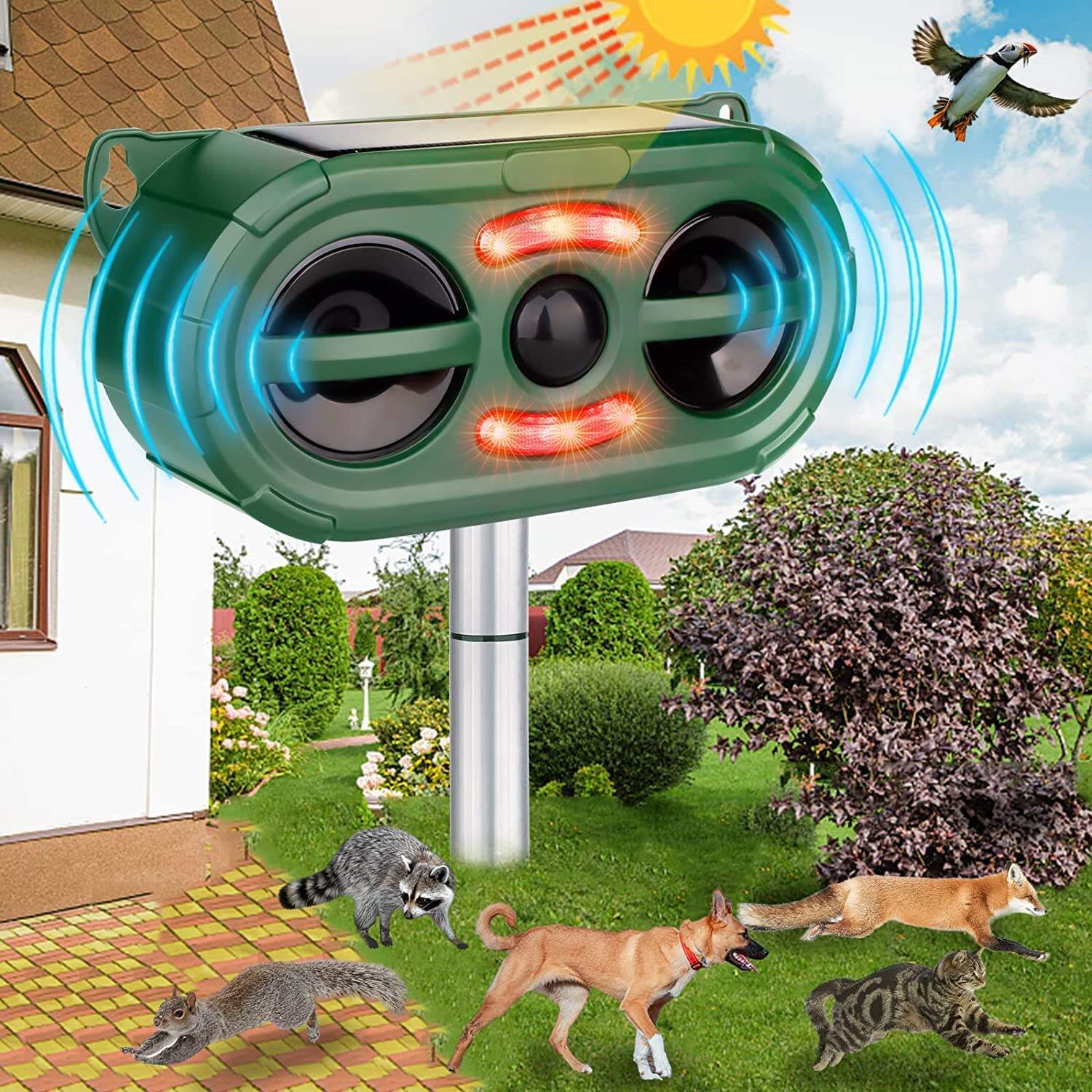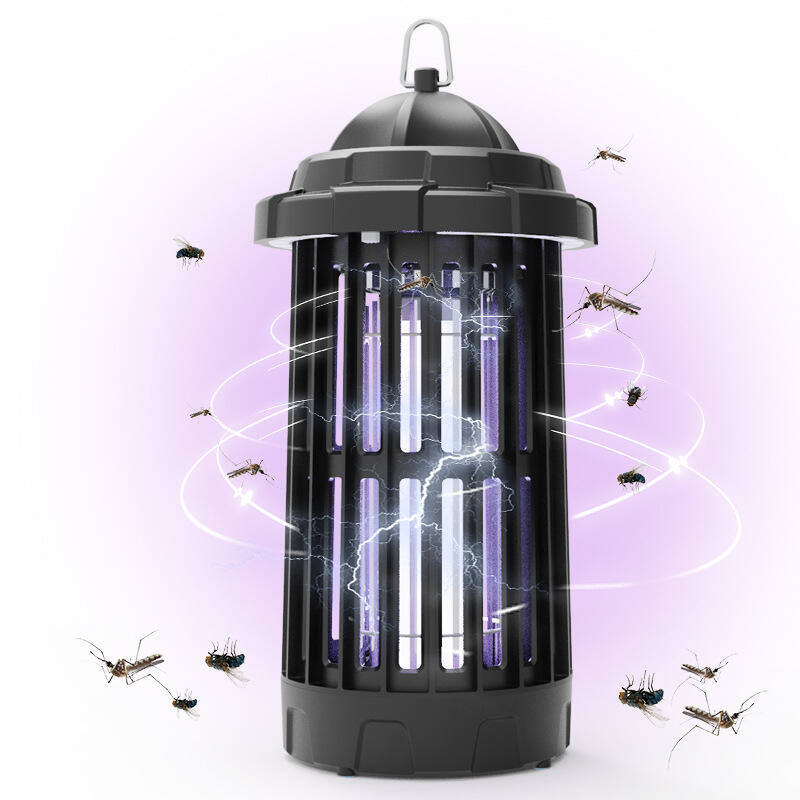Solar-Powered Ultrasonic Repellents: A High-Tech Solution
How Solar-Powered Ultrasonic Repellents Operate
The Science of Ultrasonic Frequency in Pest Deterrence
Ultrasonic waves are important in pest repelling, as they tend to emit sound at frequencies higher than 20 kHz, a region of the spectrum that we cannot hear. These frequency levels trap the pests (such as rats and insects) in an unwelcoming atmosphere that distresses their ability to communicate and navigate, thus departing them disoriented and defecit areas. The frequency of such sound waves is known to stress and make miserable to those pests who are acting as host to the same, as studies have indicated porn. This technique provides reliable method of rodent and pest prevention, eliminating the need for poison, traps, or fumigation of any kind, and is completely safe for children and pets.
Motion Sensors: Targeting Pest Activity Precisely
With the addition of motion sensors, these devices are more effective than all other ultrasonic repellents on the market, as first it uses both modes of the ultrasonic wave and second it activates at the right time. Based on our findings from the pest control professionals mixing motion sensor with ultrasonic technology increases repellent power by 3 times! These intelligent sensors are capable of detecting different motions, helping to focus the ultrasonic sound waves at pests, but with decreased sound output between movements, allowing for no wasted noise. This specific aim minimizes energy loss and fullfill the repellent’s functionality, so that a focused, green solution is found in pest control.
Eco-Friendly Benefits of Chemical-Free Pest Control
Eliminating Harmful Chemicals in Agriculture
The use of solar ultrasonic repellents is a major step towards the reduction of chemical pesticides on the farm. Conventional pesticides can have harmful and unintended consequences on human health and biodiversity. It has been well-documented that chemicals play a role in soil degradation and water pollution, thus affecting ecosystem health and agricultural productivity. When we implement natural pest control, we protect ourselves and the environment as well. In today's world with a growing attention about sustainable farming practices, it is pivotal for agricultural practices to adopt these chemical-free processes to ensure the sustainability of the planet and the resources it has to offer.
Reducing Environmental Impact with Solar Power
Combining solar energy with pest control solutions is a very important step in the way of becoming more eco-friendly. Devices with solar panels operate on a renewable energy source and reduce carbon footprints that are typically caused by the use of fossil fuel. According to research, the transition to solar-driven pest control systems can reduce operational costs by between 30-50% in the long-run, providing a financially appealing solution to farmers. In addition, this is in line with the worldwide sustainability objectives, underlining the need for environmentally farming. Less reliance on non-renewable resources Preserving our enviroment and sustainable control For sustainable pest management with efficient and effective means.
Effectiveness Against Common Agricultural Pests
Deterring Rodents Without Crop Contamination
Ultrasonic repellers are better at keeping rodents away yet ensuring the integrity of the crop. Unlike conventional methods which may use toxic chemicals or leave behind harmful residues, ultrasonic rodent repeller waves do not cause unsightly dead rodents – no snapped fingers, no blood, just two tiny holes! Research has proven that farms employing ultrasonic systems report that rodent populations have dropped massively (by up to 70%), resulting in healthier harvested produce for families to enjoy. This non-chemical based solution is primarily attractive to consumers who are conscious of health and eco-friendly products while preserving the food chain integrity with these purchase decisions.
Protecting Harvests from Birds and Squirrels
Ultrasound repellents have also been applied to protect crops from birds and squirrels, focusing on the critical period of plant development. Agricultural Case Study - Lost crops (Birds and squirrels); Losses reduced by 60% after installation of ultrasonic sound devices. What is great about this new sound-bombing technology is that it non-invasively lets farmers protect crops from raiding animals without killing them. By protecting vegetation in a way that is friendly to the environment, farmers can now concentrate on achieving high yields of crops without affecting the local ecology.
Complementing Natural Pest Control Methods
Combining ultrasonics and natural means of pest control provides an overall solution to pest control. Used in conjunction with biological controls, ultrasonic repellents enable farmers to develop integrated pest management systems, enhancing pest resistance while minimizing dependence on a single treatment. Specialists recommend that this kind of diversity in pest control is conducive not only to sustainable agriculture but to healthier environments. Farmers can with ultrasonic technology restore the natural balance to ensure healthy crops are to be protected and sustainable agricultural practices maintained.
Strategic Placement for Maximum Coverage
Optimizing Placement of Repellents
The ideal position of the ultrasonic repellents is vital to get as much coverage as you can especially when trying to deter pests. It is advisable to place these devices at higher spaces for better effect of pest repellent sounds. And it is no issue that it makes the ultrasonic repellent on all the potential entry points. By positioning the units at such entry points, farms can greatly increase their level of detection and deterrence against pests. Tests have shown that when correctly deployed detection and deterrence can increase within effected areas by 35%. This optimization does not only guarantee agricultural harvest, but also helps to make a best use of resources such as ultrasonic repellents.
Aligning with Farm Layouts and Crop Cycles
The timing and farm positioning of ultrasonic repellent systems is also a game changer for pest control, especially when the insects are most vulnerable. Frequent monitoring of crop phenology is necessary to adjust and relocate devices according to pest migrations. This strategic profile causes the repellent systems to efficaciously aim their repellent effect at pests, thereby interrupting infestations when it is most damaging. Studies on behavior of pests indicate that it is essential to time the application of repellents around these cycles for minimizing damages and conserving crops. Ultrasonic devices that can be adapted to work with the natural cadence of farms will help us to be more successful in pest management.
Troubleshooting Common Detection Issues
Solving typical problems concerning ultrasonic detection of pestsis important to improve the performance of such systems. Regular maintenance to clean sensors and consider obstructions is important even a slight obstruction can compromise sound effectiveness. These manufacturer based technical guidelines generally provide troubleshooting guidelines to correct such a detection result, leading to good repeatability. These preventative efforts ensure the ultrasonic repellents remain highly effective as pest deterrents, and that they will continue to perform their valuable role in protecting agricultural health and productivity. And by confronting the problems of detection we help make pest control more secure.

Addressing Concerns About Ultrasonic Technology
Debunking Myths: Research-Backed Results
Ultrasonic pest control technologies are surrounded by a number of myths, particularly in relation to their effectiveness and influence of pest behaviour. Some companies are making claims that are unverified about how well their products work This is a myth and you will not find ANY scientific papers or studies that will show these products will control nor repel anything. These studies provide an attractive alternative to harmful chemical treatments that skeptical farmers can trust, with proof provided by science. By knowledge/sharing research and showcasing some successful examples - we can demystify the doubts and difficulties about ultrasonic means of IoT/IIoT. For forward thinking farmers to test out these good pest management techniques, checking through the studies will give them the confidence to embrace safer and environmentally friendly control measures.
Minimizing Impact on Non-Target Species
POTENTIAL IMPACT ON NON-TARGET ORGANISMS The impact of the use of ultrasonic repellents on non-target species, such as other beneficial insects, mammals and birds, is a significant issue. Research has indicated that high frequency sounds work on the insect because they are more sensitive to they than non target beings. Research on the behavioral responses of these species demonstrates that animals can tolerate ultrasonic frequencies without consequences and encourages biodiversity. Furthermore, responsible use of these devices could contribute to the development of well-balanced ecosystems in the control of pests. We do our part through conscious care and maintain a healthy conscious garden, using tailored pest management.
Frequently Asked Questions
How do solar-powered ultrasonic repellents benefit the environment?
Solar-powered ultrasonic repellents reduce reliance on harmful chemical pesticides and use renewable energy, thus minimizing carbon footprints and promoting sustainability in pest control.
Can ultrasonic repellents impact non-target species?
Ultrasonic frequencies primarily affect pests and have minimal impact on non-target species, supporting biodiversity while efficiently managing pest populations.
What role do motion sensors play in ultrasonic repellents?
Motion sensors optimize ultrasonic repellents by activating only when pests are detected, enhancing energy efficiency and directing sound waves precisely at pest activity.
Are ultrasonic repellents effective against agricultural pests?
Yes, ultrasonic repellents are effective in deterring rodents, birds, and squirrels without the risk of crop contamination, thus preserving agricultural health and productivity.

 EN
EN




















































